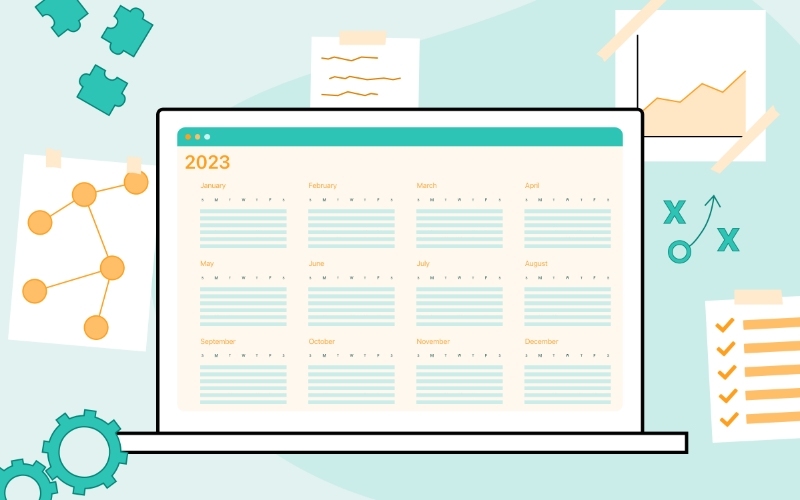Marketing Insights
Brand Strategy
Creating target personas is a critical step in any sound marketing strategy. These depictions of your primary target audience(s) are a powerful tool to create messaging and tactics that will most likely resonate with them.
Essentially, you’re building a profile, or puzzle, that maps out all the traits and characteristics of your customer, such as:
Brand perception
Brand use
Customer mindsets and motivations
Consumer influencers and media habits
Through qualitative and quantitative research, you can put together the various pieces of the persona puzzle, helping you better understand who you’re talking to and how you can best communicate with them.
Unfortunately, it is too easy to create the wrong idea of who your audience is and miss the mark in your marketing efforts. To help guide you in the right direction, I’ve put together a list of common myths accepted by many businesses, wasting precious resources to build something that won’t help them.
However, I don’t merely point out the potential target persona missteps. I also suggest ways to avoid these traps, building personas that last and, most important, convert.
Myth: You Know Your Audience Best
I’m often surprised by how convinced many companies are that they understand their clients and audiences better than anyone else. Folks with this attitude “know exactly” what their customers want or need.
While marketers in this camp may use some data or research, they have a strong tendency to rely on their own assumptions. They “think” they know what is essential to an audience or what the audience wants — and their experience may supplement that — but they are often surprised when the research reveals otherwise.
Myth Buster: Research, Don’t Assume
Continually connect with your customers through research, conversations and connection points built into your marketing plan.
Remember: Human beings are complex, emotionally driven creatures. Even though life would be much easier if it were so, people don’t fit into neat little boxes, especially when emotions are involved. Keep that in mind!
Myth: The More Distinct the Persona, the Better
As much as we wish they could be, audience personas will never be perfect. There is much more blending and overlap between different personas than you may realize. And it’s easy to focus too much on a persona’s “label,” even if it isn’t as distinct as we may hope.
Myth Buster: Combine Hard Data With Trusted Experience
A well-done persona is a beautiful blend of both art and science. The scientific method, in this case, seeks to understand the demographic data that is relevant to clients (e.g., the size of the firm where they work). When you take the time to interview your audience, you can genuinely dig into their mindsets and motivations.
The artistic approach is simple: Trust your gut. While you can’t base everything on your assumptions, you, more than most, are the one who interacts with clients and customers daily and has a feel for who they are and what they like.
Combining these two methods helps you build an accurate yet living, breathing document of who your audience is.
Myth: Create Personas Solely Based on Generations
Over the past few decades, “millennial” has become a buzzword, usually reserved for negative connotations, and all the people who fall into this massive category (in 2019, surpassing baby boomers as the largest living adult generation) are quickly stereotyped. However, research shows that the millennial population is constantly evolving, and not all of these people fall into the same bucket.
The truth is that generations aren’t one-size-fits-all; in fact, generational personas are quite nuanced. And, while they’re a good place to start, it’s important for businesses to consider other factors that make their target audience tick and subsets that target audience should include. The real question should be, What type of [insert generation here] are we talking about?
Myth Buster: Find Differentiators That Span Generations
My advice here is simple: Don’t try to figure out generations as a whole. This tactic is another circumstance where it’s best to determine what research and information will work for your brand and which subset of a generation you’re trying to target.
Even if you can’t span the generations or doing so doesn’t make sense, define the subset or differentiator you’re looking for that will funnel your audience down into a group you can be more authentic with.
As you’ll see, relying solely on generations to build your personas only leads to another line of faulty thinking.
Myth: Craft Personas Based on Stereotypes
It is easy to make assumptions about a person’s life story or current circumstances based on a stereotype they “appear” to meet. This cheeky yet insightful piece from Content Marketing Institute does a beautiful job breaking down how marketers handle delineating stereotypes and personas:
“‘A poorly constructed persona can seem a lot like a stereotype, such as all millennials want information delivered via mobile devices,’ says Kevin Smith of Kevin W. Smith Consulting, which advises financial services firms. ‘The key to powerful buyer persona development comes down to three important factors: grounded in fact, functional, and more than demographic data.’”
While some stereotypes may contain grains of truth, they are often a vastly incomplete picture of a person, let alone a segment of people.
Myth Buster: Use Stereotypes as a Starting Point
Don’t allow a common stereotype regarding your audience to cloud your judgment of who they are. If you feel you’re becoming biased — and be honest with yourself — make sure you know what the research is telling you and supplement it with what your gut may say. Or use a stereotype as a first step or hypothesis, and let the data guide you to what is real and what isn’t.
Myth: Keep It General, Without Too Much Detail
As you will soon see, it’s easy to find yourself on either end of the spectrum when it comes to the level of detail. As with stereotyping your audience, it’s easy to take things at face value and not dig any deeper.
Overgeneralizing your audience means you’re content with surface-level insights that aren’t specific enough to relate to your target audience. Remember: Not all details or information will apply to all categories. It is critical to understand what is generally accurate or relevant to your particular persona using the research you’ve gathered.
Myth Buster: Do Your Homework
Keep digging. Don’t default to preconceived notions and be satisfied. Ask more questions and see what the information reveals about the true nature of your audience.
Always be thinking about their mindsets and motivations, as these form the driving force in buying decisions regardless of your persona.


